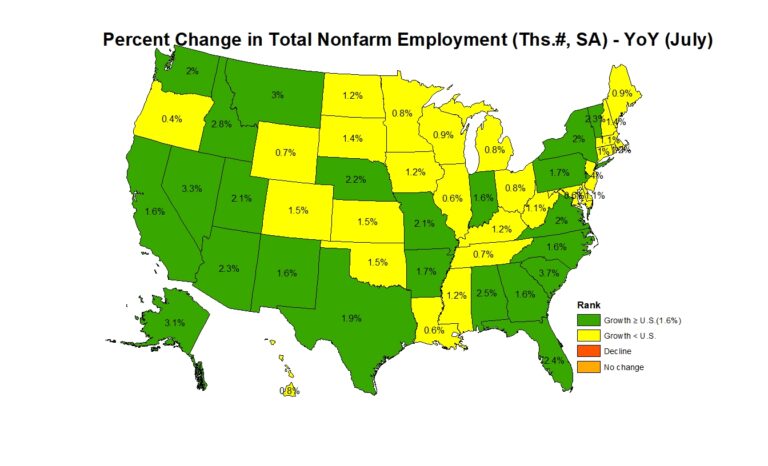State & local tax revenue from property taxes paid reached $780.9 billion in the four quarters ending in the second quarter of 2024 (seasonally adjusted), according to the Census Bureau’s estimates. This is a 1.7% increase from the revised $767.7 billion in the four quarters ending in the first quarter of 2024. Year-to-date, total state and local tax revenue was $1.05 trillion. This was 5% higher than the $995.7 billion through the first two quarters of 2023.
The 1.7% increase in the four-quarter property tax revenue was down from the previous quarter of 1.8%. Property tax revenues have continued to grow above the average rate of 0.96% since 2011, with this quarter marking the seventh consecutive quarter of above average growth.
Year-over-year, property tax revenue was 9.1% higher. Year-over-year growth in property tax revenue has consistently been above 9% for four consecutive quarters. Dating back to 2012, the average year-over-year growth is 4.0%.
The property tax share of total state & local tax collections in the second quarter stood at 37.8%, down from 37.9%. This was the first decline in the share since its recent trough in the third quarter of 2022 (33.7%).
Of total collections, property tax made up the largest share, followed by sales tax at 28.0%. Individual income tax represented 25.5% of tax revenue, while corporate tax made up the remaining 8.7% of revenues for state & local revenues in the second quarter of 2024.
Over the past decade, state & local governments have been most reliant on property taxes for revenue. Sales tax has had an increased importance since 2023, when the share of sales tax of total revenues grew above individual income tax shares. See the chart below for the trends of total tax revenues shares.
Discover more from Eye On Housing
Subscribe to get the latest posts sent to your email.
This article was originally published by a eyeonhousing.org . Read the Original article here. .



